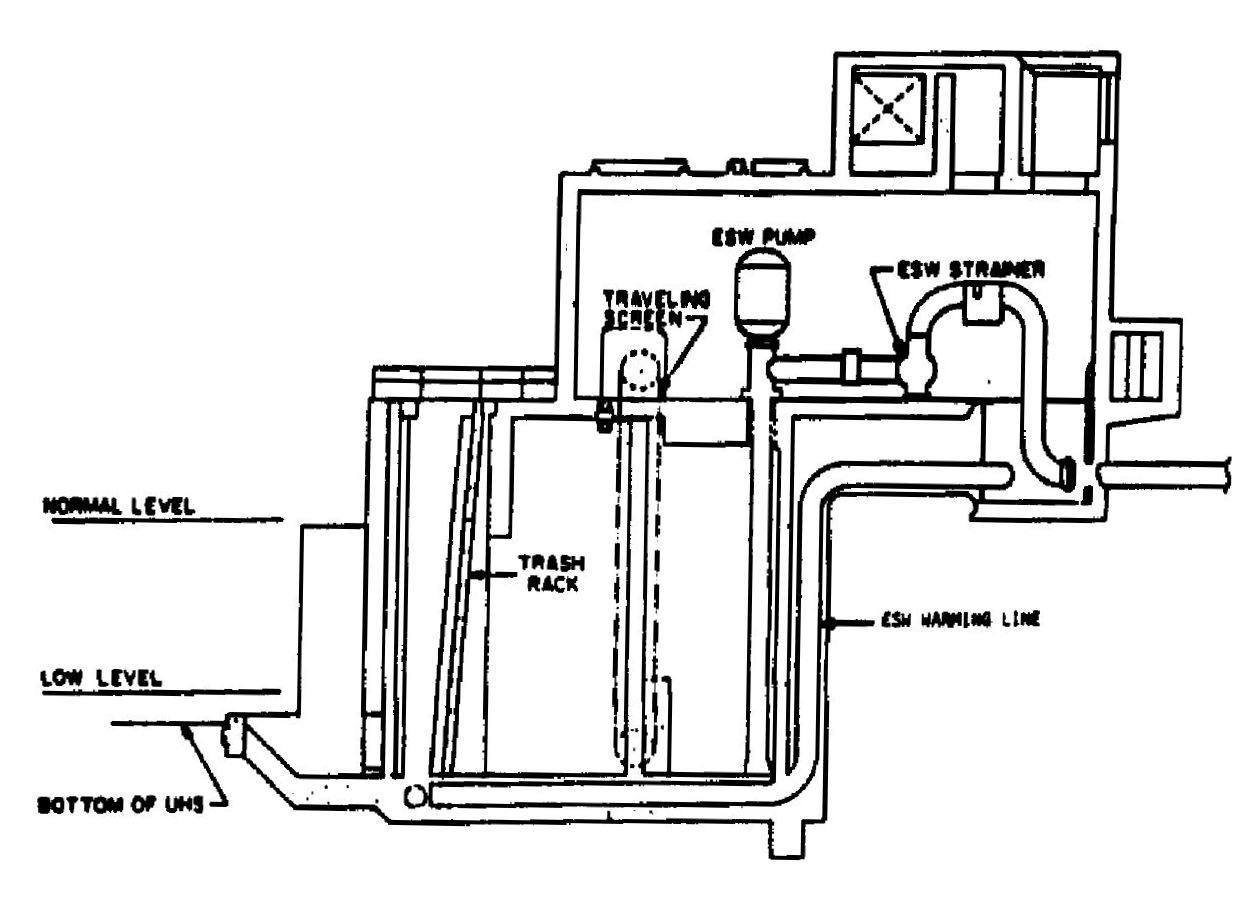Look at a map of nuclear power plant locations and you’ll see that the plants are always located next to a river, a lake, or an ocean. While such siting provides picturesque views for workers, the real reason that these locations were chosen was the abundant supply of water.
Nuclear power plants have a thermal efficiency of about 33 percent. This means the three units of thermal power created by splitting atoms in the reactor core yield one unit of electricity and two units of waste heat. A nuclear plant generating 1,000 megawatts of electricity discharges 2,000 megawatts of waste heat to the environment. That’s nearly seven billion British Thermal Units (BTUs) per hour. A BTU is defined as the amount of energy needed to raise the temperature of one pound of water by one degree. A gallon of water weights about eight pounds. Skipping the math, suffice it to say that it takes lots of water to handle the waste heat released from a nuclear power plant.
The water drawn into a nuclear plant from a river, lake, or ocean passes through mesh screens designed to keep floating debris like tree branches and 2-liter soda bottles from damaging plant equipment. The mesh screens do not stop smaller things from entering the plant’s piping and cooling systems.
The smaller things include living organisms. Instead of merely touring the nuclear plants, some of these visitors decided to take up residence. Sometimes these unwelcome squatters have had to be evicted by their nuclear landlords. (Fission Story #27 told of jellyfish problems at nuclear plants.)
In September 1980, workers at Arkansas Nuclear One found the service water system and the auxiliary cooling water system clogged by asiatic clams. In January 1982, plant workers tested the containment cooling system. The cooling water flow rate dropped from about 1,800 gallons per minute to about 600 gallons per minute in five minutes. The test failed because at least 1,250 gallons per minute were needed to remove the containment heat following an accident. Workers removed asiatic clams from the cooling system to unblock the system and restore the required flow rate.
In April 1981, workers at the Brunswick nuclear plant in North Carolina removed oysters, blue mussels, barnacles, and tubeworms from the service water systems.
In June 1981, workers at the San Onofre Unit 1 nuclear plant in California discovered abnormally low flow going through the component cooling water system. They found the system’s piping partially clogged by gooseneck barnacles.
In August 1981, workers at the Pilgrim nuclear plant near Plymouth, Massachusetts found that the salt service water system’s flow partially blocked by growth of mussels. The aquatic growth had very serious safety implications. Equipment needed to supply makeup water to the reactor core and to remove heat from the containment building may have overheated and failed during an emergency because of the degraded cooling water systems.
Our Takeaway
Events like the marine invasions described above and similar problems with sand and silt clogging cooling water systems prompted the NRC to issue Generic Letter 89-13, “Service Water System Problems Affecting Safety-Related Equipment,” to plant owners on July 18, 1989. The NRC required plant owners to monitor the performance of cooling water systems and take steps to correct degradation before it compromised safety margins
The NRC connected the dots to see a disturbing picture – biological growth and debris were impairing abilities to cool essential equipment at nuclear power plants. Rather than tolerating these recurring annoyances because none had yet caused a nuclear disaster, the NRC pro-actively intervened to cause steps to be taken that provide greater assurance that cooling functions are not compromised.
The NRC issued a generic issue in this case. It is among an array of tools in the NRC’s generic communications program. The NRC has literally issued thousands of such communications to plant owners, and other NRC licensees, over the years. They are excellent ways to get the NRC and plants owners on the same page, literally and figuratively, when it comes to safety expectations.
“Fission Stories” is a weekly feature by Dave Lochbaum. For more information on nuclear power safety, see the nuclear safety section of UCS’s website and our interactive map, the Nuclear Power Information Tracker.


